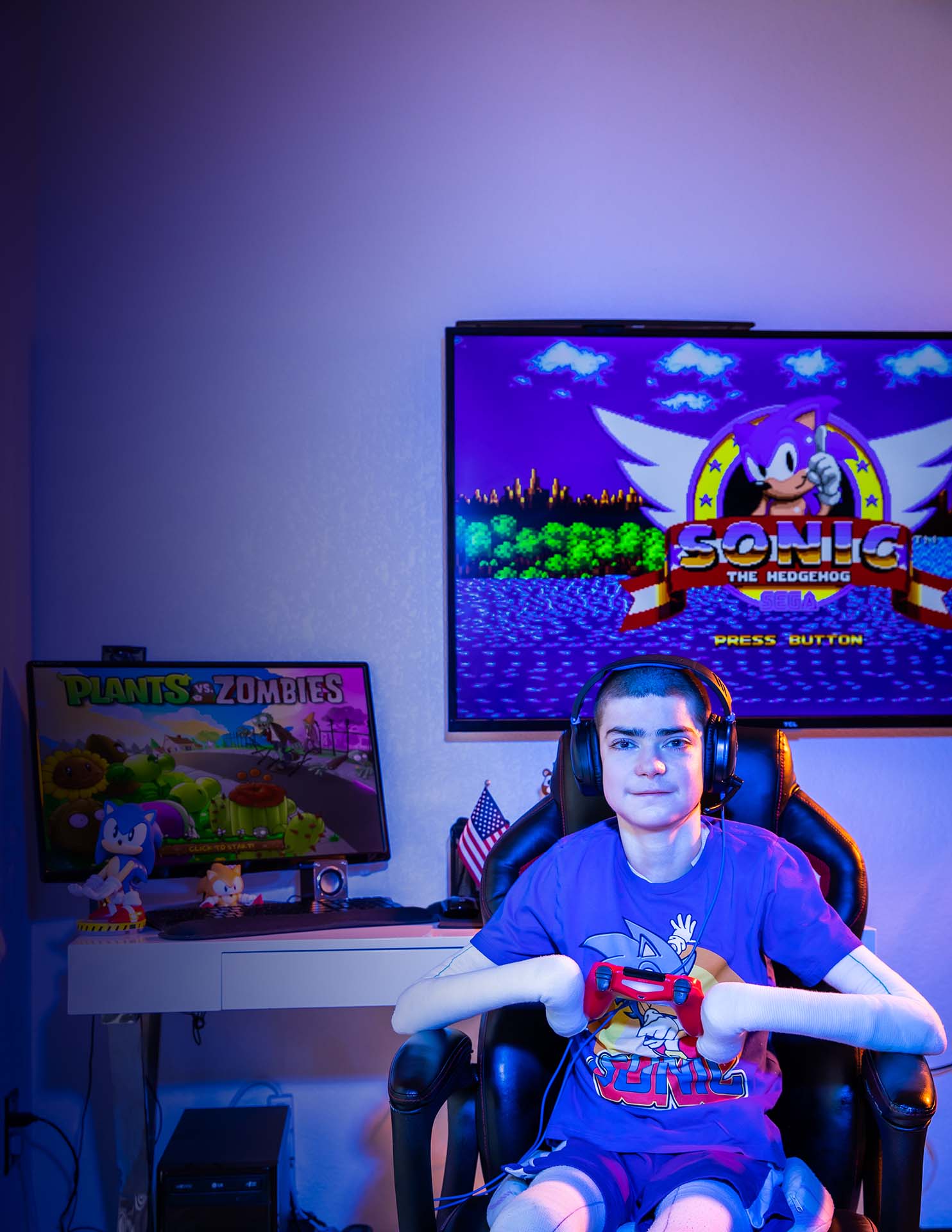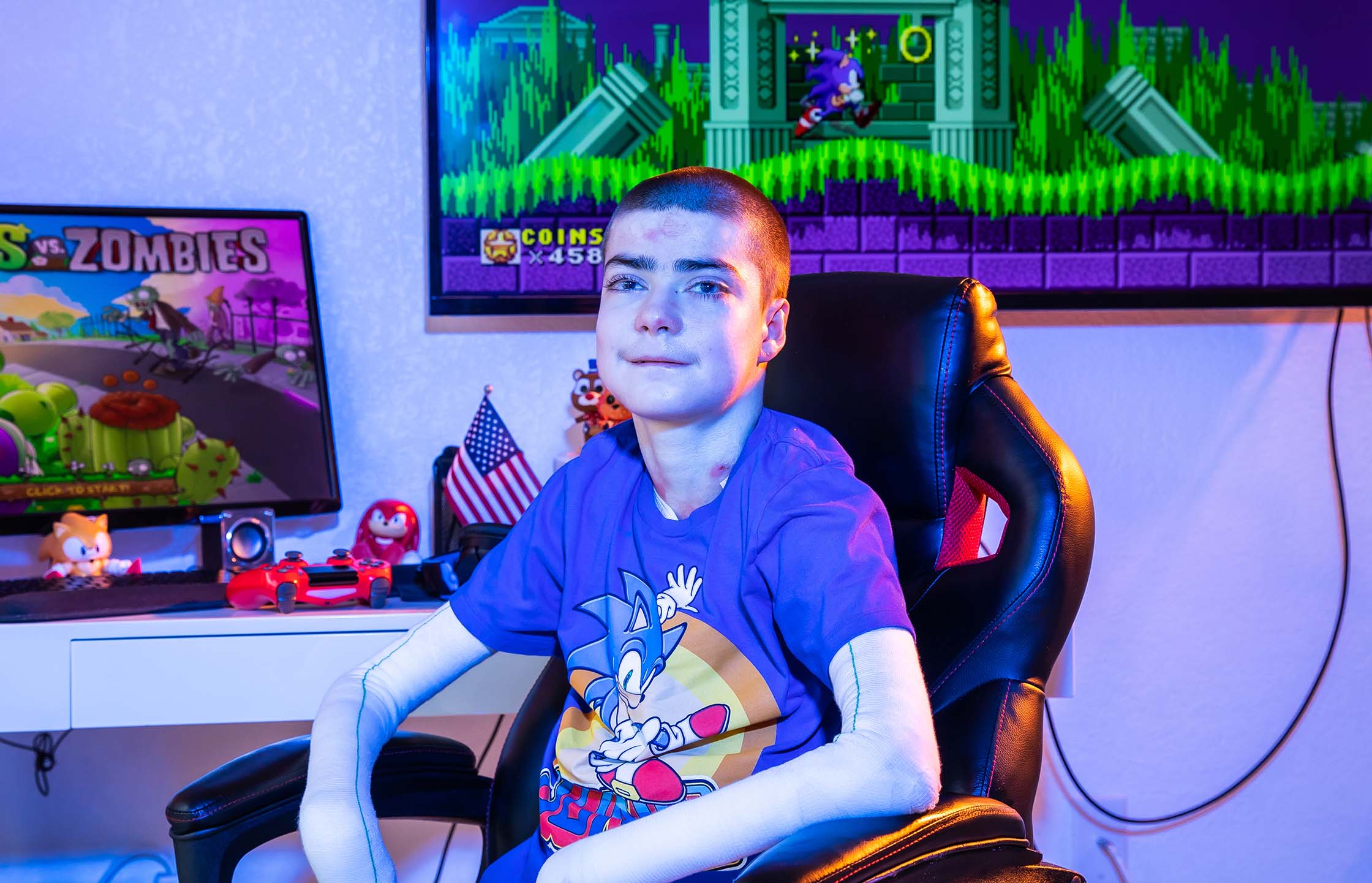A Whole New World
Compassionate use of a gene therapy drug helps restore a teen’s sight
By Stacey Bomser
Photography by Sonya Revell

Antonio Vento
L
ike many 14-year-olds, Antonio Vento loves to play video games, but that was not always easy. For most of his young life, Antonio, who lives in Miami, was legally blind. He suffers from dystrophic epidermolysis bullosa, a rare genetic condition in which his body produces the wrong type of collagen, causing blisters to develop all over his body, including in his eyes. Despite numerous surgeries to remove the tissue affecting his vision, the blisters kept growing back. Antonio’s vision was reduced to seeing only shadows.
A breakthrough came when Alfonso L. Sabater, M.D., Ph.D., medical director of the Ocular Surface Program and director of the Corneal Innovation Lab at Bascom Palmer Eye Institute, learned that Antonio was experiencing positive results from a clinical trial using gene therapy to treat his skin condition. He contacted the drug manufacturer, Krystal Biotech, to see if the therapy could be adapted for the eye. After two years of studies proving its safety and effectiveness, Dr. Sabater was granted compassionate use approval from the Food and Drug Administration.
Last year, Antonio became the first person to undergo the unique gene therapy, which uses eyedrops to introduce the missing gene needed to produce collagen. It’s been successful: His blisters have ceased, and his vision has improved to 20/25.
Dr. Sabater believes Antonio’s story is the perfect example of how philanthropy supports innovative research and, in turn, patient care. “Philanthropy provides the resources that allow physician-scientists to turn ideas into reality,” Dr. Sabater said. “Philanthropy helps bring science forward.”
Having his vision restored has opened a whole new world for Antonio, who had stopped walking because he did not feel safe or secure. He is even playing video games again. “I’m thankful Dr. Sabater was able to perform this miracle for me,” he said. “I have a lot of love for him.”
That is a sentiment shared by Antonio’s mother, Yunielkys “Yuni” Carvajal. “Imagine what it feels like for a mother, for her son to turn to her and say, ‘Mom, I can see you! I can see the color of your eyes.’ That’s priceless.”
While she acknowledges that it was “scary” to allow her son to be the first patient to undergo this experimental use of gene therapy, Carvajal said she had complete confidence in Dr. Sabater and Bascom Palmer, where Antonio has been a patient since he was 4 years old.
“Dr. Sabater has always given us hope. He always encouraged us that he would find a solution and restore Antonio’s sight. He never gave up and continued to fight alongside us until Antonio could see again,” Carvajal said. “My son — he’s my biggest treasure. I can’t thank Dr. Sabater enough for everything he did for Antonio and our family.”
To support Dr. Sabater’s work, visit https://miami.edu/DrSabater ![]()



